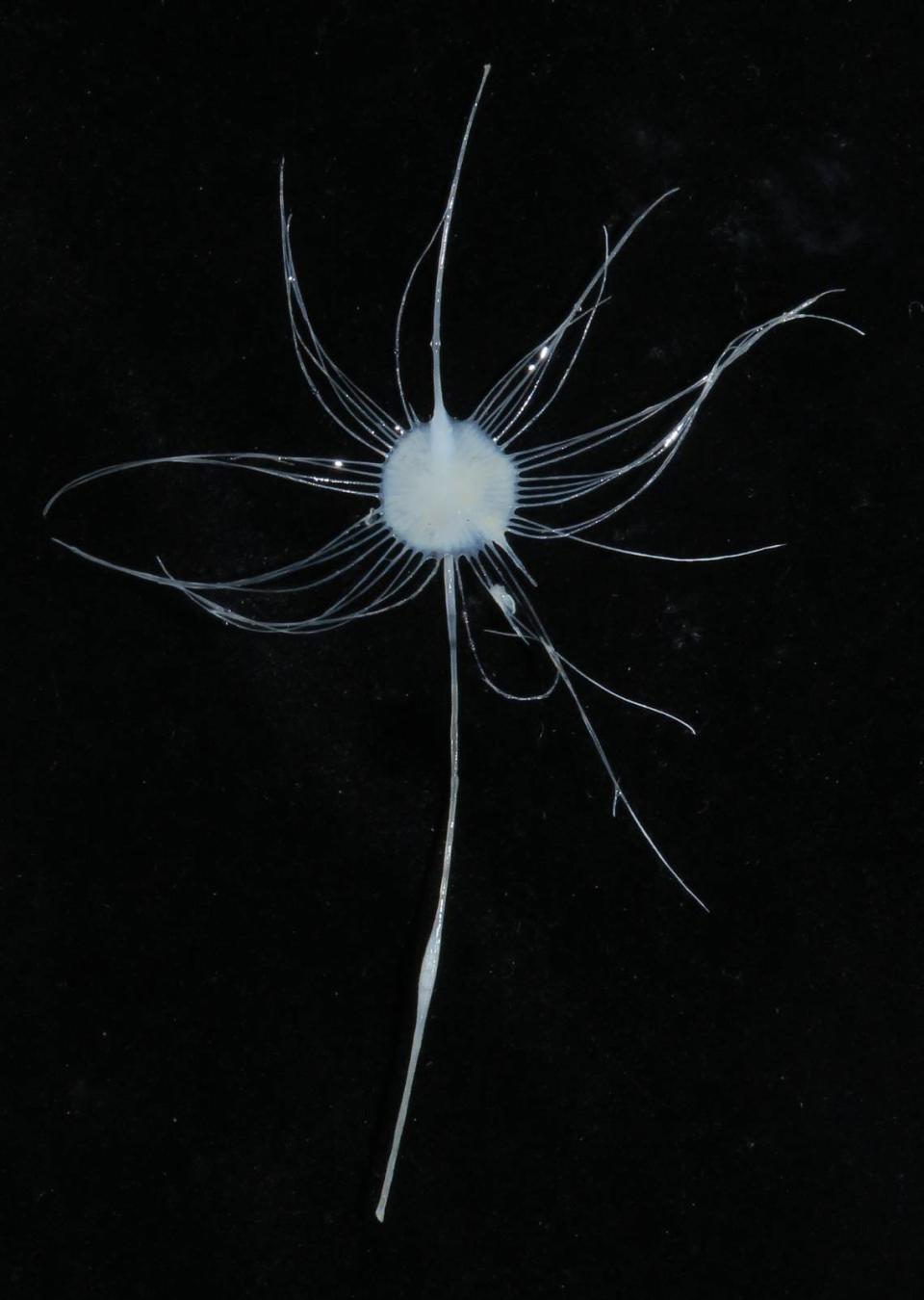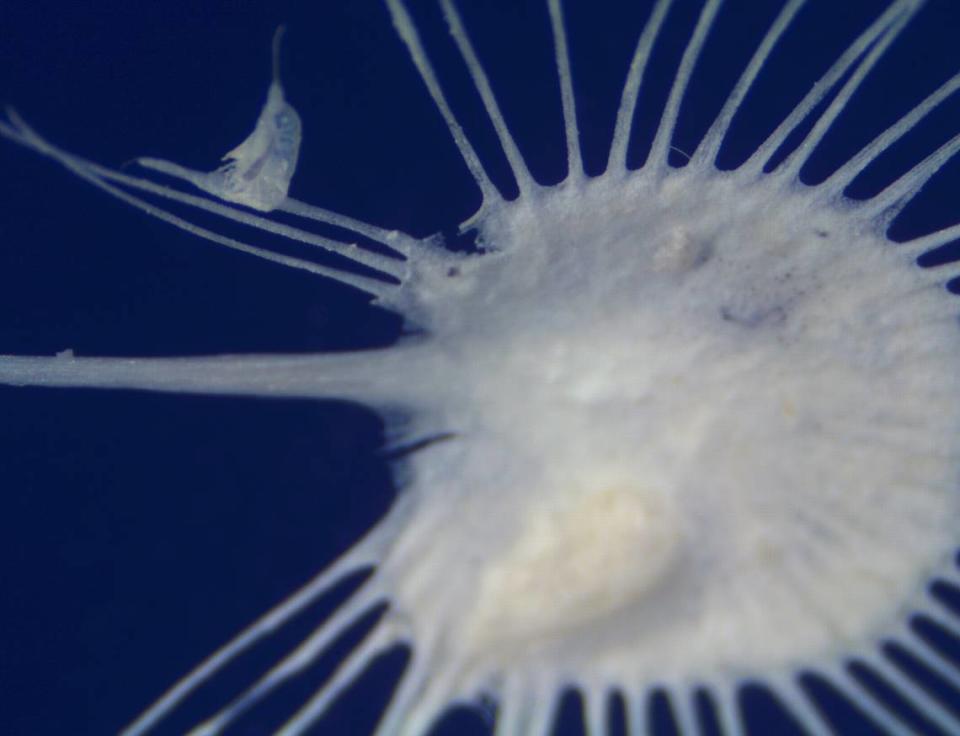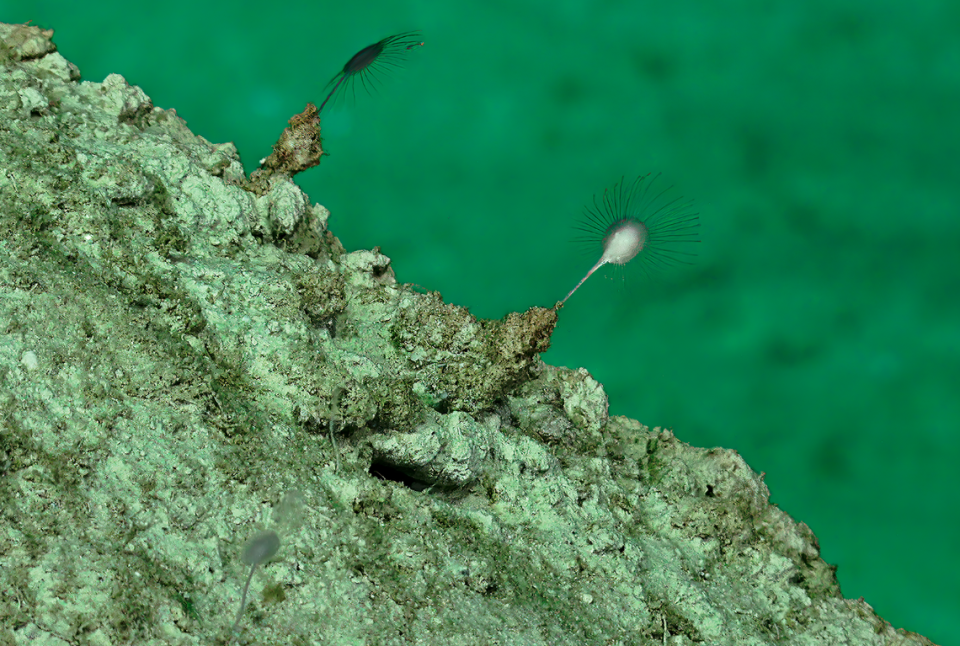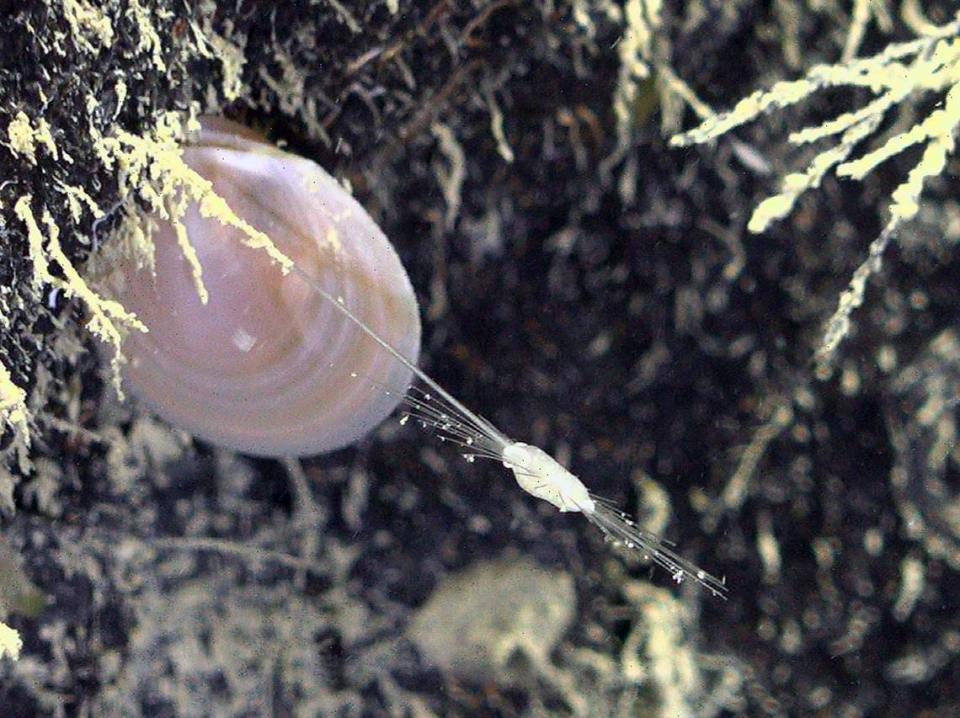‘Alien wanderer’ found hanging upside down in underwater cave. It’s a new species
Deep underwater, a little creature hung upside down in a cave along Australia’s Great Barrier Reef. The “alien wanderer” munched its meal when something metallic began to move in closer.
Above the surface, scientists peered at the upside-down animal and realized they’d discovered a new species.
Merrick Ekins sat at a desk, his eyes glued to the screen where he was directing the deep-sea dive of a remote operated vehicle, or ROV, the Queensland Museum Network wrote in a June 16 news release shared with McClatchy News.
The ROV was sent underwater to explore the Great Barrier Reef by a team aboard the Schmidt Ocean Institute’s research vessel Falkor, the release said.
Over the course of four dives, researchers found several sea sponges that appeared to be undiscovered species, according to a May 23 study in the journal Zootaxa. They photographed the sponges, carefully collected the animals and brought them to the surface for further study.
Looking closer, researchers realized they’d found three new species of carnivorous sponges on the dives, the study said.
The first new species was found hanging upside down along the roof of an underwater cave and named Axoniderma wanda, researchers said. The sponge resembled the parasitic “alien wanderer” or “Wanda” from the book and movie ”The Host.”
Axoniderma wanda sponges are shaped almost like a lollipop, with a disc-like body and a “long thin stem,” the study said. Its body can reach about 0.3 inches in diameter with a much longer stem. Photos show the sponge and its white-ish coloring.

One Axoniderma wanda was still eating its last meal, a partially digested crustacean, when researchers collected it, photos show.

The second new sponge species was named Abyssocladia falkor after the expedition’s research vessel, the study said.
Abyssocladia falkor sponges are shaped almost like a stretched out toy rattle with discs on opposite ends of a long, thin stalk. The animals have a cream coloring and reach about 0.3 inches in diameter.
Photos show an Abyssocladia falkor sponge perched on a rock.

The third new species was found along a rock and named Abyssocladia jeanvaceleti, researchers said. The animal was named after Jean Vacelet, the scientist who “proved the existence” of carnivorous sponges.
Abyssocladia jeanvaceleti sponges also have a lollipop-like shape with a disc-shaped body and a long stem, the study said. Their flat, thin bodies can reach about 0.3 inches in diameter and have tiny filaments radiating outward.

Researchers identified the sponges as new species based on their body shapes and physical structures, the study said. They could not analyze the sponges’ DNA because the specimens were contaminated during collection or processing.
The expedition also documented several other species of sponge. The use of ROVs in discovering several sponges shows the technology’s “immense value to carefully observe and collect (sponges) from cryptic habitats,” researchers said.
The new sponge species were found at three different spots along the Great Barrier Reef off Australia’s northeastern coast.
The research team included Merrick Ekins and John Hooper.
‘Territorial’ creature found near swampy water is discovered as new species in Amazon
Spiky creature — a new species — shed its skin trying to escape grasp of scientists
Ant-eating creature lurking below airport turns out to be ‘ultra-slender’ new species

